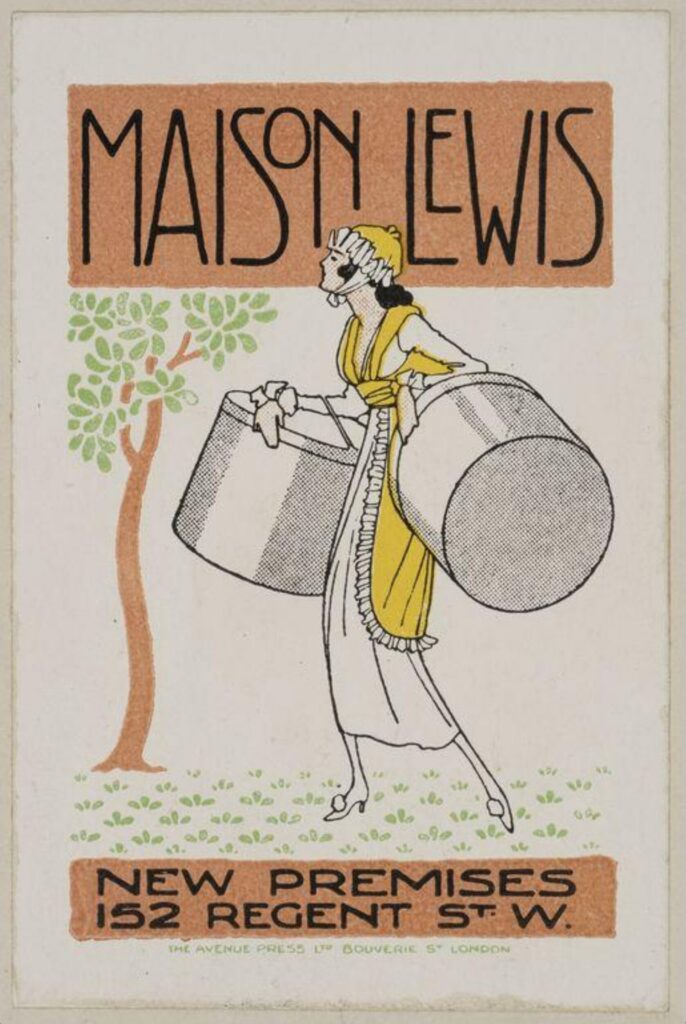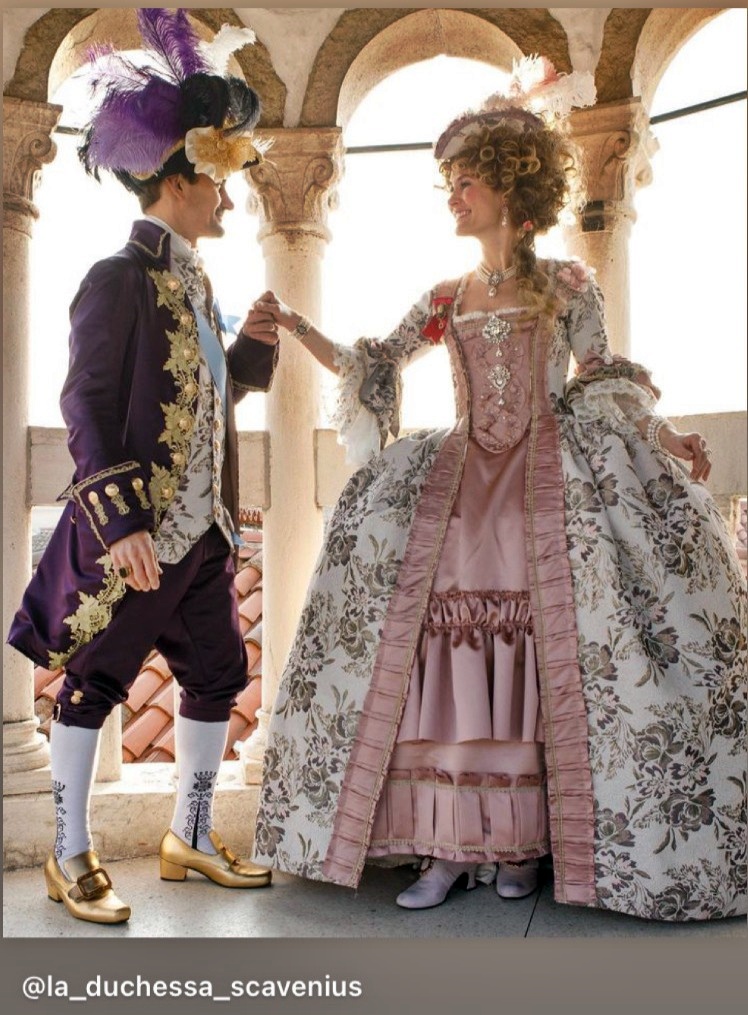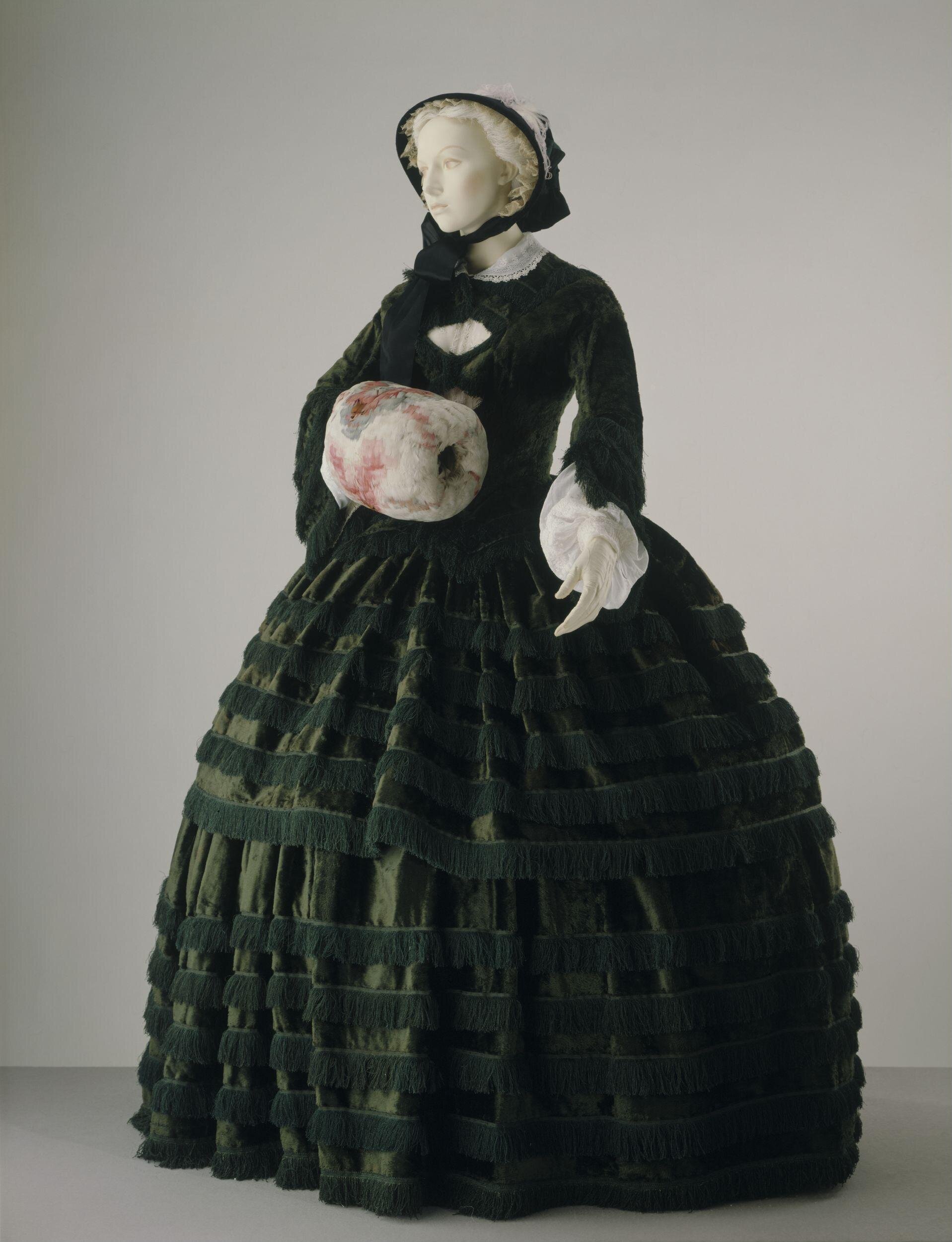There is something about hat boxes that adds such a nice touch to a room or a feeling of sophistication to a scene. While they may not elicit as much excitement as vintage hats themselves, they are elegant reminders of a time past. A time of daily formality and attention to detail. A time when purchases were more of an event than they often are today.
Shall we take a look?

Pre-Victorian hat boxes
Women’s hat boxes began to make an appearance around the same time that fashion became more commercial and public, coming up on the Regency era.
Although the early 19th century is when more hat boxes were produced, there are some examples from earlier centuries, especially for expensive headdresses as seen in the example from 1460 below.

The inception: 19th century hat boxes
The view of hat boxes as a status symbol began to take off during the Regency era with the onset of large, expensive bonnets and then increased rapidly through the Victorian era. This change is highlighted in the 1829 satire below.

The image below highlights the emergence of boxes appearing on the market to store bonnets.

Such storage became more common in the 19th century for multiple reasons including:
-Individuals were beginning to travel more frequently and at greater distances. As we have explored on the blog before, prior to the 19th century it was not as common for people, especially women, to travel for leisure or to travel far from home. This new lifestyle dynamic required the invention of clothing and supplies of a highly practical nature. Hats were a vital part of a woman’s wardrobe ad often very expensive and therefore had to be stored safely during trips.
-Simply put, people began to own more hats during the 19th century. This is due to the expanding public sphere that required the head to be covered for modesty and custom. Millinery exploded as an industry after 1800 and boxes were created for function as well as a way for shops to set themselves apart.

We can see how the need for products for women’s hats specifically grew as the 19th century progressed, as most of the hat boxes I came across that were made prior to the late 1800s were for men’s hats as seen below.

Some hat boxes were created just to allow the hat to be transported back home and not sturdy enough to have survived over time. Others were made for travel, as seen below.

Want to learn more about how women prepared to travel during the Victorian era? Check out our blog post: Victorian traveling dress: guidelines for a proper lady.
Hat boxes as status symbols

Hat boxes would remain common and visible until the end of daily hat usage, roughly at the later end of the 1950s. But while common, they increasingly evolved into status symbols. Says the Loison Museum:
“Especially in some cities, this association was successful and became the symbol of the wealthy, productive and demanding bourgeoisie; Milan is an example of this. The features of the hatbox: luxury, refinement, aesthetic attention to the container and, at the same time, to the content, became very important strengths that were transferred with the purchase of the panettone to those who bought it. Exhibiting them was therefore a widespread practice, as evidenced by many photos from the 1950s, a period in which this curious packaging had a formidable success. In fact, they became, in effect, symbols to be shown on the street and in one’s home, synonymous with economic availability and social distinction.”

Image source: New York Historical Society.
Something of note about the hat boxes created in the 1950s is the experimentation with plastic that we have seen for other items during the decade. For a brief time clear hat boxes were produced, allowing those with an extensive collection of hats to easily find their head covering of the day.
















Leave A Comment